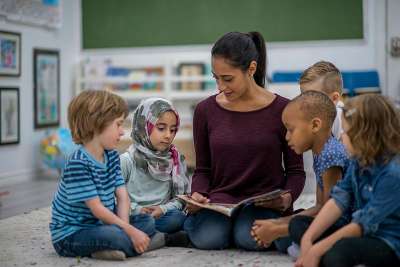Five Styles of Handling Children's Conflicts
| Style of Handling Conflict | Uses | Limitations |
| DIRECTION When you say, in effect, "Do this," you are directing. Direction is a non-negotiating approach. An adult authority decides what needs to be done and gives the direction that it be done. It's important to recognize that directing need not be unkind or authoritarian. Children can be told nicely, but clearly, what they need to do. | When safety is at stake; when children are out of control and need help getting back into control; when there is no time to discuss or negotiate; when the problem is not important enough to spend much time or energy. | Doesn't build children's independence in problem solving; may cause resentment on the part of children; may not really solve problems. |
| MEDIATION A third party--either a staff person or any trained person--sits with children and helps them work out their conflict by creating an environment where problem solving can take place. This is done by strictly enforcing ground rules: be honest, no interrupting, and no name calling or put downs. The mediator helps the disputants define their problem, develop solutions, and choose a workable solution. | Because the disputants are solving the problem themselves, they are invested in the solution. Also, it helps get to the root of some persistent problems. | Takes time! The conflict may not be worth the time and effort compared to the learning that comes from it. |
| ARBITRATION Also involves a third party who hears both (or all) sides, then tells the disputants how they should handle the conflict. This may be done with some input from the disputants, or by simply saying, "This is what you're going to do." | Efficient. Gives the disputants a chance to state their point of view, but doesn't spend a lot of time on problem solving. | May not get to the root of the problem. The disputants may not learn anything about solving conflicts. |
| JUDGMENT Sometimes the emphasis needs to be not on problem solving, but on determining who was right and who was wrong. Children depend on the adult to act as a judge, to listen and weigh the evidence, and then to pass a fair judgment. | When there has been clear wrongdoing andthe parties involved want justice; when there is a need for consequences to be decided upon for actions. | Doesn't build independent problem-solving skills; keeps children dependent upon adults; is by nature a win-lose solution rather than a win-win solution. |
Return to Responding to Conflict Amongst Young Children.
Excerpted from Early Childhood Adventures in Peacemaking by William J. Kreidler and Sally Tsubokawa.






